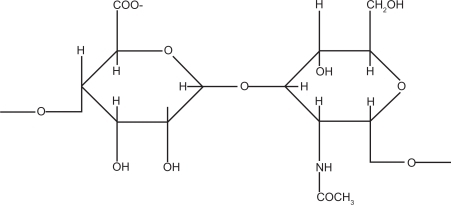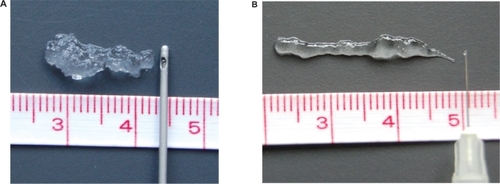Figures & data
Figure 1 Tissue engineering substrate made of hyaluronic acid. Water has been applied to one end of this sheet in order to demonstrate the solubility of the material.

Figure 2 The chemical composition of hyaluronic acid. This diamer is polymerized into macromolecular chains which are then stabilized.

Figure 3 (A) Restylane SubQ®, a large-granule product, for deep dermal placement. (B) Juvederm Ultra 2®, a finer product for more superficial use. Note the difference in texture and the needles used for insertion; the former is placed using a cannula, whilst the latter is injected using a fine-gauge needle.
